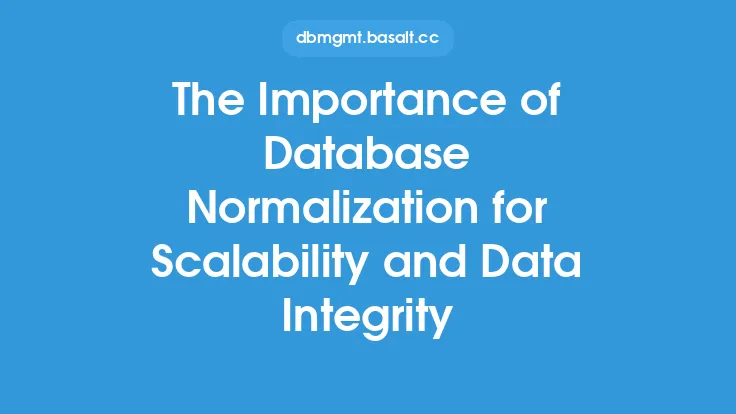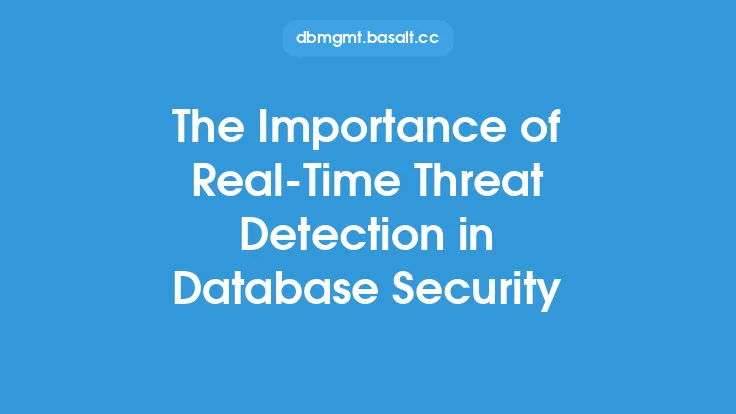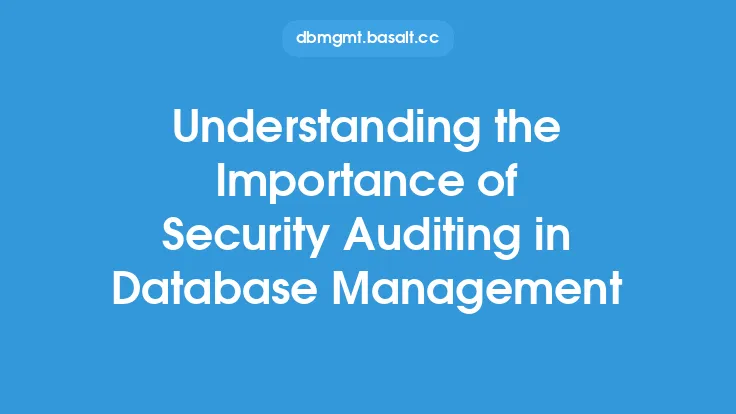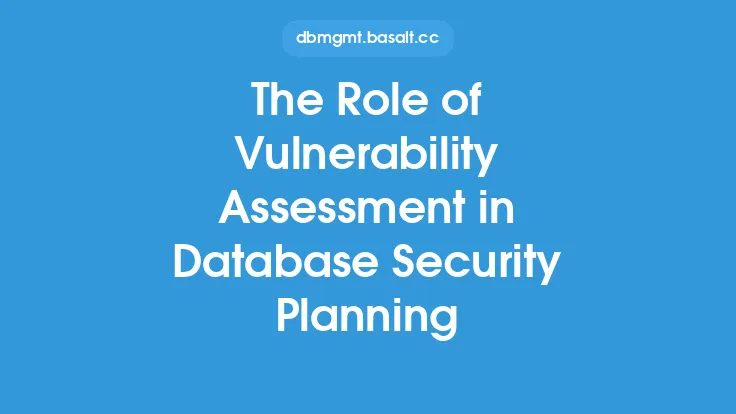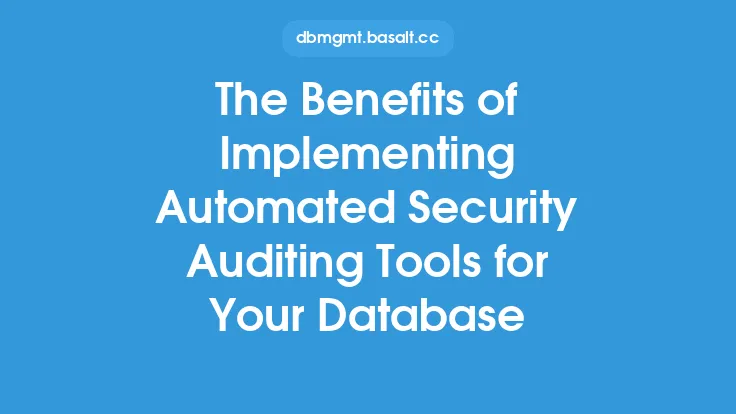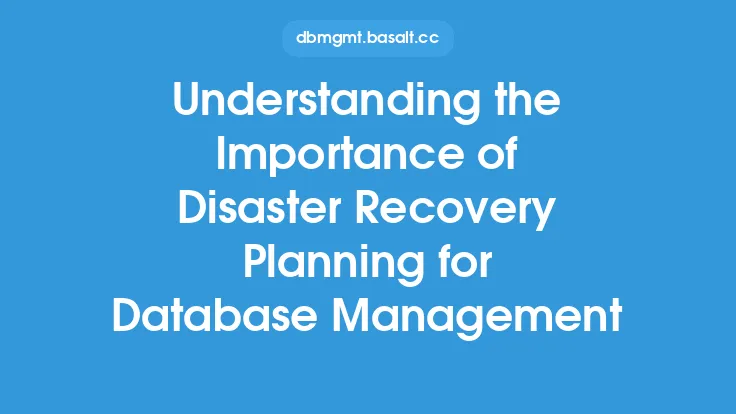Regular database scans are a crucial aspect of maintaining the security and integrity of an organization's database systems. These scans involve systematically examining the database for potential vulnerabilities, weaknesses, and misconfigurations that could be exploited by attackers to gain unauthorized access, steal sensitive data, or disrupt database operations. In today's digital landscape, where data is a valuable asset, the importance of regular database scans for vulnerability detection cannot be overstated.
Introduction to Database Scans
Database scans are a type of vulnerability assessment that focuses specifically on database systems. They are designed to identify potential entry points that an attacker could use to compromise the database. These scans can be performed manually or through the use of automated tools, and they typically involve a series of tests and analyses to evaluate the database's security posture. The goal of a database scan is to provide a comprehensive view of the database's vulnerabilities, allowing organizations to take proactive measures to remediate them before they can be exploited.
Types of Database Scans
There are several types of database scans that organizations can use to detect vulnerabilities, each with its own strengths and weaknesses. Some common types of database scans include:
- Network-based scans: These scans involve examining the database's network interfaces and protocols to identify potential vulnerabilities. They can help detect issues such as open ports, weak authentication mechanisms, and misconfigured firewalls.
- Configuration-based scans: These scans focus on evaluating the database's configuration settings to identify potential weaknesses. They can help detect issues such as weak passwords, outdated software, and misconfigured access controls.
- Code-based scans: These scans involve examining the database's code and applications to identify potential vulnerabilities. They can help detect issues such as SQL injection vulnerabilities, cross-site scripting (XSS) vulnerabilities, and other types of code-based attacks.
Benefits of Regular Database Scans
Regular database scans offer several benefits to organizations, including:
- Improved security posture: By identifying and remediating vulnerabilities, organizations can improve their overall security posture and reduce the risk of a data breach.
- Compliance with regulations: Many regulatory requirements, such as PCI-DSS and HIPAA, mandate regular vulnerability assessments and penetration testing. Regular database scans can help organizations demonstrate compliance with these regulations.
- Reduced risk of data breaches: By identifying and remediating vulnerabilities, organizations can reduce the risk of a data breach and protect sensitive data.
- Improved incident response: Regular database scans can help organizations improve their incident response capabilities by identifying potential vulnerabilities and developing strategies to respond to them.
How to Perform a Database Scan
Performing a database scan involves several steps, including:
- Planning and preparation: Before performing a database scan, organizations should plan and prepare by identifying the scope of the scan, selecting the appropriate tools and techniques, and ensuring that the necessary personnel and resources are available.
- Scan execution: The scan execution phase involves running the selected tools and techniques against the database to identify potential vulnerabilities.
- Vulnerability analysis: After the scan is complete, the results should be analyzed to identify potential vulnerabilities and prioritize remediation efforts.
- Remediation and mitigation: The final step involves remediating and mitigating identified vulnerabilities to prevent exploitation.
Tools and Techniques for Database Scans
There are several tools and techniques that organizations can use to perform database scans, including:
- Vulnerability scanners: These tools use automated algorithms to identify potential vulnerabilities in the database.
- Penetration testing tools: These tools simulate real-world attacks to test the database's defenses and identify potential vulnerabilities.
- Configuration management tools: These tools help organizations manage and monitor the database's configuration settings to identify potential weaknesses.
- Code review tools: These tools help organizations examine the database's code and applications to identify potential vulnerabilities.
Challenges and Limitations of Database Scans
While database scans are an essential aspect of database security, there are several challenges and limitations that organizations should be aware of, including:
- False positives and false negatives: Database scans can generate false positives (identifying a vulnerability that does not exist) and false negatives (failing to identify a vulnerability that does exist).
- Resource intensive: Database scans can be resource-intensive, requiring significant personnel and computational resources.
- Complexity: Database scans can be complex, requiring specialized knowledge and expertise to perform and interpret the results.
Best Practices for Database Scans
To get the most out of database scans, organizations should follow several best practices, including:
- Regularly schedule scans: Database scans should be performed regularly to ensure that the database's security posture is up-to-date.
- Use a combination of tools and techniques: Organizations should use a combination of tools and techniques to perform database scans, including vulnerability scanners, penetration testing tools, and configuration management tools.
- Analyze and prioritize results: The results of the database scan should be analyzed and prioritized to ensure that the most critical vulnerabilities are remediated first.
- Continuously monitor and improve: Database scans should be part of a continuous monitoring and improvement process, with organizations regularly reviewing and updating their database security posture to ensure that it remains effective.
